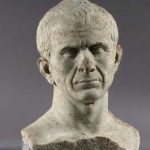The latest research from the ancient necropolis of Vila de Madrid in Barcelona (Spain) gives us more information about what the ancient Romans ate during feasts in the tombs of the dead, during celebrations or holidays.
The aforementioned necropolis served as a burial place between the 2nd and the middle of the 3rd century CE. Archaeologists analyzed preserved animal and human material. As it turns out, the remains of cows, pigs, sheep, goats, chickens, and even rabbits, foxes, deer, fish and mussels have been identified. Cattle (approx. 42%) and pigs (approx. 27%) constituted the largest percentage.
The purpose of the study was to determine whether the Romans consumed any special or unique food on such special occasions. As it turns out, there was no different diet here than what they used on a daily basis. Interestingly, in many graves, you can see small holes or pipes, which, as it turns out, the revellers offered food to the deceased. This is proof of how closely the Romans were attached to their ancestors.







